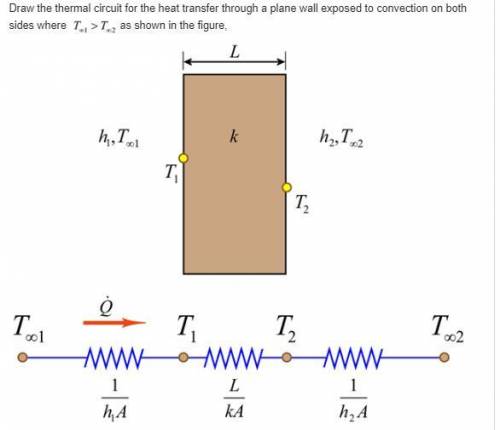
Engineering, 13.07.2020 19:01 jksimmons2364
Consider steady one-dimensional heat transfer through a plane wall exposed to convection from both sides to environments at known temperatures T[infinity]1 and T[infinity]2 with known heat transfer coefficients h1 and h2. Once the rate of heat transfer has been evaluated, explain how you would determine the temperature of each surface.

Answers: 2


Other questions on the subject: Engineering

Engineering, 03.07.2019 15:10, brooklyn674
Apiston-cylinder with a volume of 0.25 m3 holds 1 kg of air (r 0.287 k/kgk) at a temperature of 100 c. heat transfer to the cylinder causes an isothermal expansion of the piston until the volume triples. how much heat is added to the piston-cylinder?
Answers: 3

Engineering, 04.07.2019 18:10, johnthienann58
Thermal stresses are developed in a metal when its a) initial temperature is changed b) final temperature is changed c) density is changed d) thermal deformation is prevented e) expansion is prevented f) contraction is prevented
Answers: 2

Engineering, 04.07.2019 18:20, kodyclancy
Aquick transition of the operating speed of a shaft from its critical speed will whirl amplitude. (a) increase (b) limit (c) not affect (d) zero
Answers: 2

Engineering, 04.07.2019 18:20, safiyabrowne7594
Ahe-xe mixture containing a 0.75 mole fraction of helium is used for cooling electronics in an avionics application. at a temperature of 300 k and atmospheric pressure, calculate the mass fraction of helium and the mass density, molar concentration and molecular weight of the mixture. if the cooling capacity is 10 l, what is the mass of the coolant?
Answers: 3
You know the right answer?
Consider steady one-dimensional heat transfer through a plane wall exposed to convection from both s...
Questions in other subjects:

English, 21.06.2021 21:50


Mathematics, 21.06.2021 21:50



Mathematics, 21.06.2021 21:50

Mathematics, 21.06.2021 21:50






